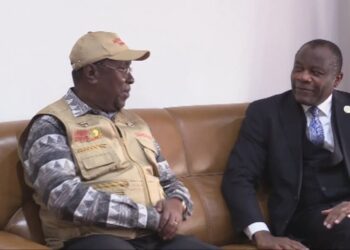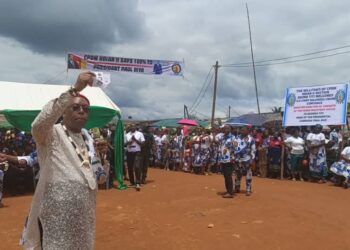Story, Louvier Kindo Tombe
As Africa edges closer to realizing its dream of a unified market under the African Continental Free Trade Area (AfCFTA), the spotlight is on small and medium enterprises (SMEs) in Cameroon—businesses that make up nearly 99% of the country’s economy.
On May 29, 2025, stakeholders, business leaders, and economic analysts gathered to reflect on what the AfCFTA could mean for these enterprises: a gateway to new opportunities, or a battlefield of fresh challenges.
Moderated by Nkeh Tamfu Paul, Program Analyst at the Cameroon Economic Policy Institute (CEPI), the conversation brought together seasoned voices such as Henri Kouam, CEPI’s Founder and Executive Director; economic consultant Chefor Daisy; and logistics entrepreneur Rouben Tamba of UB Brima Investment and Logistics Ltd. Their insights painted a picture of both promise and peril.
For Henri Kouam, the AfCFTA is nothing short of a game-changer. “By reducing trade barriers, SMEs could see input costs fall and market access widen,” he said.
With Africa’s population set to soar in the coming decades, Kouam argued that the agreement could open doors to massive job creation and revenue growth. Yet, he warned of the hurdles: inadequate credit, poor access to market intelligence, and the inability of many SMEs to scale up for international trade.
Chefor Daisy approached the discussion with a framework for readiness—capacity, compliance, and connectivity. In her view, only SMEs that diversify revenue streams and sharpen their ability to navigate regulations will survive the pressures of a larger, more competitive market.
“It’s not enough to dream of exporting,” she stressed. “SMEs must be prepared to meet standards, both locally and internationally.”
Rouben Tamba, speaking from the vantage point of logistics and supply chains, stressed collaboration. “No single SME can meet the demands of regional markets alone,” he cautioned.
“Partnerships are essential, not only to standardize products but also to create networks strong enough to compete with established players.”
Tamba also underscored the role of youth, calling for training and mentorship programs that prepare young entrepreneurs to seize AfCFTA’s cross-border opportunities.
Yet, even as the panelists highlighted the vast potential, infrastructure loomed as a stubborn obstacle. Poor roads, limited logistics facilities, and high costs of digital tools were cited as barriers to competitiveness.
Kouam went further, urging Cameroon to set “annual road construction targets” and cut customs duties on technology to lower digitalization costs for SMEs.
In the end, the panelists converged on one point: without deliberate policy support, the promise of AfCFTA could easily bypass the very SMEs it was designed to empower.
They recommended capacity building, public–private partnerships for digitization, and reforms that bring informal businesses into the fold. To encourage this transition, participating SMEs proposed a tax holiday for newly registered businesses—a measure that could spur job creation and formalization.
The AfCFTA may indeed be the key to unlocking Africa’s vast economic potential, but for Cameroonian SMEs, the path is far from smooth. The challenge now lies in bridging the gap between lofty continental ambitions and the daily struggles of small businesses.
As the continent prepares to trade as one, Cameroon’s SMEs must decide whether to adapt, collaborate, and innovate—or risk being left behind.








